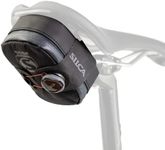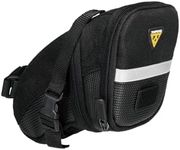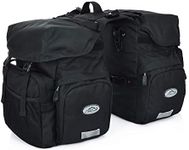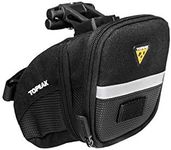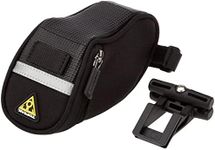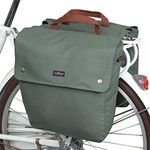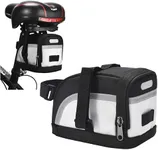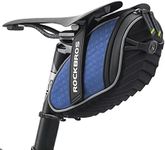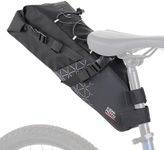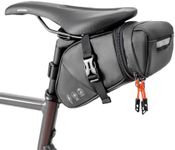Buying Guide for the Best Bicycle Saddle Bags
Choosing the right bicycle saddle bag can greatly enhance your cycling experience by providing convenient storage for your essentials. Whether you're a casual rider, a commuter, or a long-distance cyclist, the right saddle bag can make a big difference. Here are some key specifications to consider when selecting a bicycle saddle bag, along with explanations to help you make the best choice for your needs.CapacityCapacity refers to the amount of space available inside the saddle bag, usually measured in liters. This is important because it determines how much you can carry. Small bags (0.5-1 liter) are great for essentials like a spare tube, tire levers, and a multi-tool. Medium bags (1-2 liters) can hold additional items like a mini pump, snacks, and a phone. Large bags (2+ liters) are suitable for longer rides where you might need extra gear or clothing. Choose a capacity based on what you typically need to carry on your rides.
Mounting SystemThe mounting system is how the saddle bag attaches to your bike. Common systems include straps, clips, and quick-release mechanisms. Straps are versatile and fit most bikes, but can be less convenient to remove. Clips and quick-release systems offer easier attachment and removal, which is useful if you frequently take the bag on and off. Consider how often you'll need to remove the bag and choose a mounting system that suits your convenience.
MaterialThe material of the saddle bag affects its durability and weather resistance. Common materials include nylon, polyester, and waterproof fabrics. Nylon and polyester are lightweight and durable, suitable for most conditions. Waterproof materials are essential if you ride in wet conditions, as they protect your belongings from rain and splashes. Think about the typical weather conditions you ride in and choose a material that will keep your items safe and dry.
Compartments and OrganizationCompartments and organization refer to the internal layout of the saddle bag. Some bags have a single large compartment, while others have multiple pockets and dividers. A well-organized bag can make it easier to find and access your items quickly. If you carry a variety of small items, look for a bag with multiple compartments. If you prefer simplicity, a single large compartment might be sufficient. Consider how you like to organize your gear and choose a bag that matches your preference.
Reflective ElementsReflective elements are features on the saddle bag that enhance visibility in low-light conditions. These can include reflective strips, logos, or piping. Visibility is crucial for safety, especially if you ride at dawn, dusk, or night. Reflective elements help make you more visible to drivers and other cyclists. If you often ride in low-light conditions, look for a bag with ample reflective features to increase your safety.
WeightWeight is the overall heaviness of the saddle bag, which can affect your ride. Lighter bags are generally preferred as they add less weight to your bike, making it easier to handle and ride. However, lighter materials might compromise durability. If you prioritize a lightweight setup, look for a bag made from lightweight materials. If durability is more important, you might accept a slightly heavier bag. Balance your need for a lightweight setup with the durability required for your riding conditions.

